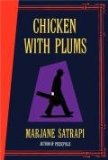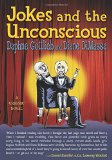November 2006
Jeff VanderMeer
comicbookslut
Catching Up
Since the last column, I’ve gotten two new gigs. The first is writing the comics/graphic novel summation for The Year’s Best Fantasy & Horror (St. Martin’s Press). The second is serving as a judge for the Eisner Awards. The full list of judges should be announced before Bookslut posts this column. Having just come off a stint as a World Fantasy Award judge, I must be crazy to have said yes, but the idea of getting to read so many more comics and graphic novels than I’m already reading made it too attractive to turn down.
Although all materials for the Eisner should go to the awards administrator, rest assured that review materials sent to me potentially do triple duty. In addition, my wife, Ann VanderMeer, is a permanent judge for the International Horror Guild Awards, which just awarded their 2005 comics/graphic novel award to Enki Bilal. So make that quadruple duty. The address to send materials to is listed at the end of this column.
Two Views of Death

Marjane Satrapi has rightly received praise for her previous work, but Chicken With Plums is a bit of a stumble. The burden on autobiographical material is the same as on fictional or fictionalized material, despite the knee-jerk reaction to say this is compelling because it actually happened: to find a kind of truth, to be honest, and to be believable within the chosen context. Chicken with Plums details the willful death of Satrapi’s great-uncle, the noted musician Nasser Ali Khan, after he cannot find a suitable replacement for his favorite instrument. It’s a kind of severe pining. Along the way, the reader is shown more about Khan’s life and the people around him. There’s much of interest in the (underdeveloped) peripherals, but the central narrative left me cold. Satrapi’s story is unconvincing mainly because the idea is so falsely romantic. Part of me wanted to say to Khan while he was busy dying, “Grow a backbone. Gut it out. All the rest of us poor slobs have to.” Maybe this is the personal reaction of a creative person to perceived sentimental bullshit, but it is a valid reaction.

A more compelling exploration of grief and melancholy can be found in Jokes and the Unconscious by Daphne Gottlieb and Diane DiMassa. A teenager named Sasha takes a job at the hospital where her recently deceased father worked as a doctor. In a series of funny, darkly funny, disturbing, and horrifying vignettes, Gottlieg and DiMassa show Sasha dealing with all types of patients and situations. Sasha also shares memories of her father and tries to come to terms with his death. The creators of this tough yet sometimes touching story don’t shy away from the gritty details, and the drawing style ranges from deliberately primitive to detailed and precise. A certain surreal element to some of the drawings provides additional contrast. The sheer variety of material also impressed me -- from flashbacks to key moments of Sasha’s life, stand-alone joke pages that still inform the main text, and much else.
Chicken with Plums, Marjane Satrapi
Pantheon Books
ISBN 0375424156
96 Pages
Jokes and the Unconscious, Daphne Gottlieb and Diane DiMassa
Cleis Press
ISBN 157344250X
112 Pages
Short Takes
Monologues for the Coming Plague by Anders Nilsen is either the kind of minimalist tripe that passes for man-on-the-street philosophy these days, complete with boring stick figure drawings, or a thought-provoking, sometimes moving commentary on the modern world that uses an almost Taoist sensibility and a delightfully austere drawing style. The truth is, in general, closer to the latter. Iron West by Doug TenNapel features dinosaurs, little dialogue, and tons of Wild West adventure, using a bold, dynamic style that carries the reader past any story weaknesses. Just good old-fashioned fun. Er, with robots and sasquatch. Fables: 1001 Nights of Snowfall written by Bill Willington with illustrations by, among others Charles Vess and James Jean, embodies the word “sumptuous” while still being intelligent. Stories like “The Fencing Lesson” update and recombine folktales in interesting and adult ways. The cover of The Sweeter Side of R. Crumb by Robert Crumb features a drawing of the author holding a cat and saying “Believe it or not!” Well, believe it. This is the sweeter side of Crumb, the kind of coffee table book you could display for guests without fear. It’s also a more affecting book than I expected, with portraits of jazz musicians and others rendered in a sympathetic, almost loving way. The antic, cluttered neurotic quality that sometimes makes it hard for me to enjoy Crumb is almost entirely missing from this book. The magic of The Magic Bottle, written and illustrated by Camille Rose Garcia, resides mostly in the Disney-from-Hell style of the full-color paintings. Sinister and possessing an unexpected depth, the unsettling visuals tend to overwhelm the prose, but who cares? In an alternate universe inhabited by squid and Betty Boop impersonators, Camille Rose Garcia is Queen.
Next Time
The January column will feature a review of An Anthology of Graphic Fiction, Cartoons, and True Stories, edited by Ivan Brunetti. I’m not going to do an overview of the best of the year this year, but I will post links in this column to the best-of-year summations of others.
Contact Info
Send complaints, compliments, concerns, and rambling rants about how wrong I am to: vanderworld at hotmail.com. (I’ll assume you don’t mind being quoted in this column if you send me something.)
Send materials for review to Bookslut and to me at POB 4248, Tallahassee, FL 32315.




